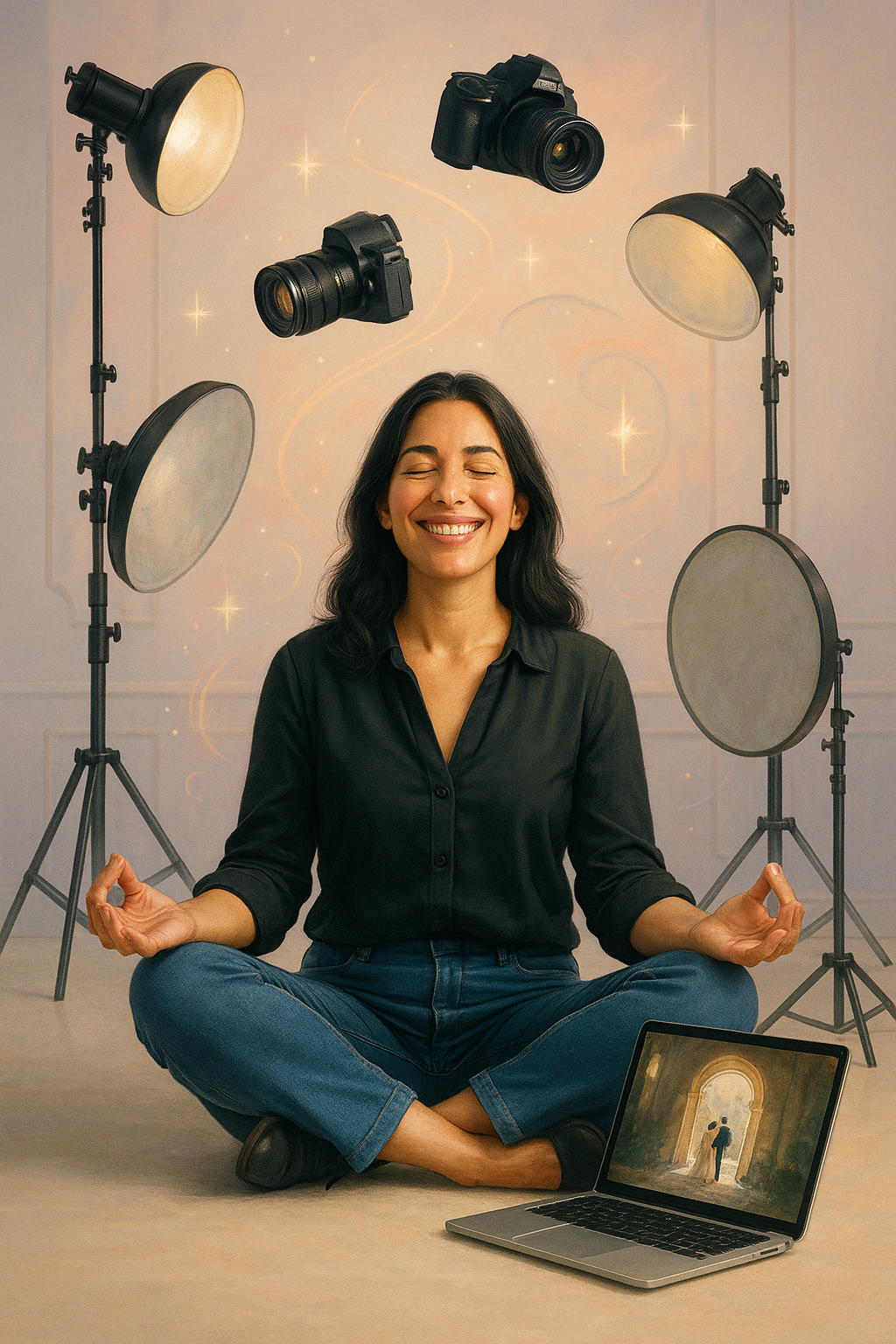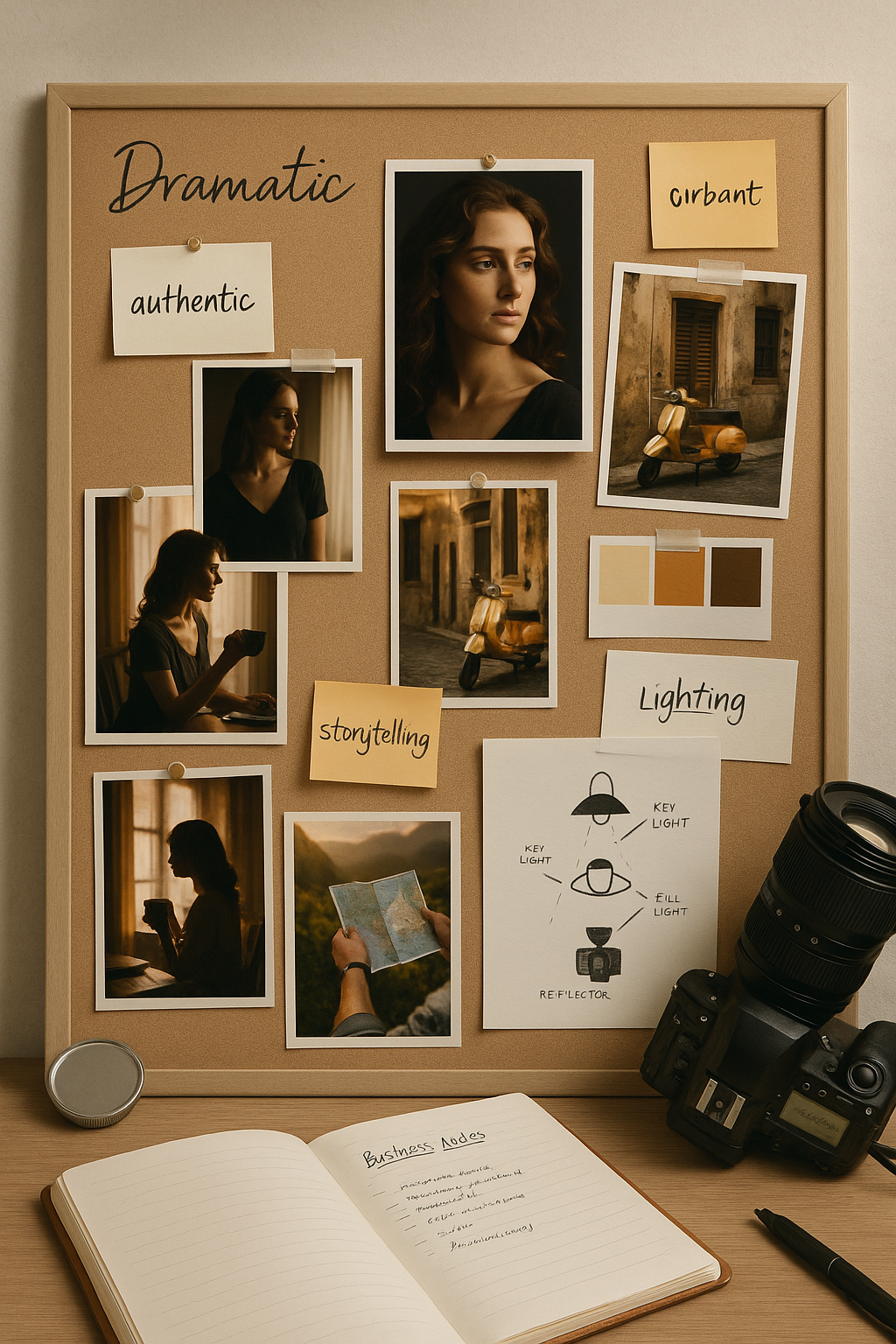
Mood Boards: Why They Matter and How to Create One for Your Brand or Campaign

If you’ve ever felt overwhelmed trying to describe your brand’s vibe or unsure how to express a creative vision for a photoshoot, there’s a simple but powerful tool that can help: the mood board.
Whether you're planning a personal brand session, launching a product, or leading a campaign, a mood board is like your visual compass — guiding decisions, clarifying style, and making sure everyone is aligned from start to finish.
Let’s break down what mood boards are, why they’re so valuable, and how to create one like a pro.
What Is a Mood Board?
A mood board is a curated collage of visuals — images, colors, textures, typography, sometimes even words — that represent the feeling, style, and direction of a creative project.
Think of it as a visual brainstorm. It captures tone, emotion, aesthetics, and energy in a way words often can’t. It’s not about being perfect — it’s about being intentional.
Why Mood Boards Are So Important
1. They Clarify Your Vision
You may say you want your brand to feel “elegant” or “bold,” but what those words mean visually can vary a lot. A mood board helps translate ideas into images, creating clarity for you and your photographer or creative team.
2. They Ensure Consistency
A mood board becomes your reference point. It keeps styling, lighting, color grading, and posing aligned with your goals — especially helpful for multi-day shoots or campaigns involving multiple creatives.
3. They Spark Creative Confidence
Once your visual direction is clear, you’ll feel more confident stepping into your shoot. No guesswork. No overwhelm. Just clarity and cohesion.
How to Create a Mood Board for Your Brand or Campaign
✨Step 1: Define Your Purpose
What is this shoot for? A rebrand? A product launch? Personal visibility?
Write down your objective — this will shape every visual decision.
✨Step 2: Find Words That Define Your Style
Pick 3–5 adjectives that describe how you want the final images to feel.
Examples:
-
“Warm, natural, empowering”
-
“Moody, edgy, high-end”
-
“Playful, modern, approachable”
These keywords will guide your image selections.
✨Step 3: Gather Visual Inspiration
Use tools like:
-
Pinterest (great for mood boards and categories)
-
Instagram saves
-
Canva or Milanote (for layout)
-
Your own photos, screenshots, or packaging
Look for:
-
Lighting styles (natural vs studio)
-
Color palettes
-
Wardrobe or makeup looks
-
Poses and expressions
-
Backgrounds or props
Don’t just pick pretty images — pick ones that feel like you or your brand.
✨Step 4: Curate, Don’t Cram
Aim for 6–12 carefully selected images that align cohesively. Too many will confuse the direction — less is more!
✨ Step 5: Share It With Your Photographer or Team
Your mood board becomes a collaboration tool. It sets expectations, reduces revisions, and speeds up decision-making on shoot day.
Bonus Tips:
✔️ Include brand elements (like your logo or color codes) if you’re creating for a commercial campaign.
✔️ Use real faces and body types that resonate with you and your audience.
✔️ Create different versions if you're torn between styles (ex: one light and airy, one darker and moody) — your photographer can help you choose.
Final Thoughts
A mood board isn’t just a pretty collage. It’s your visual blueprint — and one of the most valuable tools to ensure your personal brand or campaign is consistent, intentional, and powerfully you.
So before your next shoot, take some time to dream, gather, and curate. Future-you (and your photographer!) will thank you.


